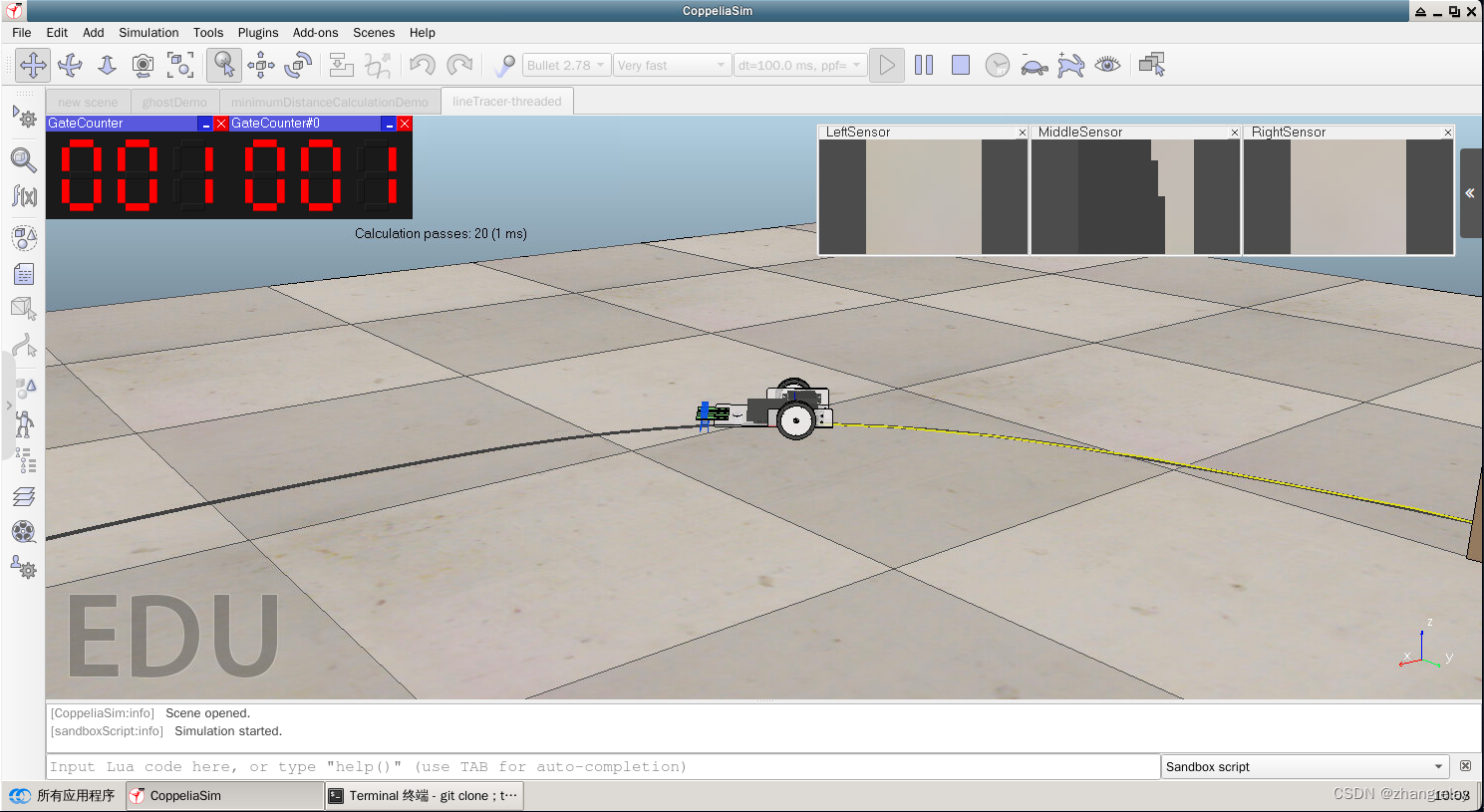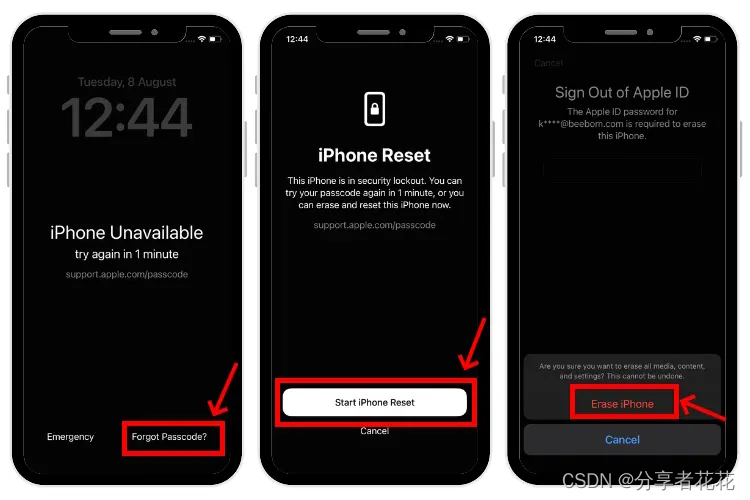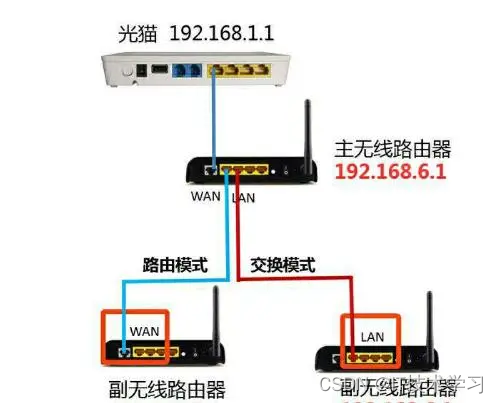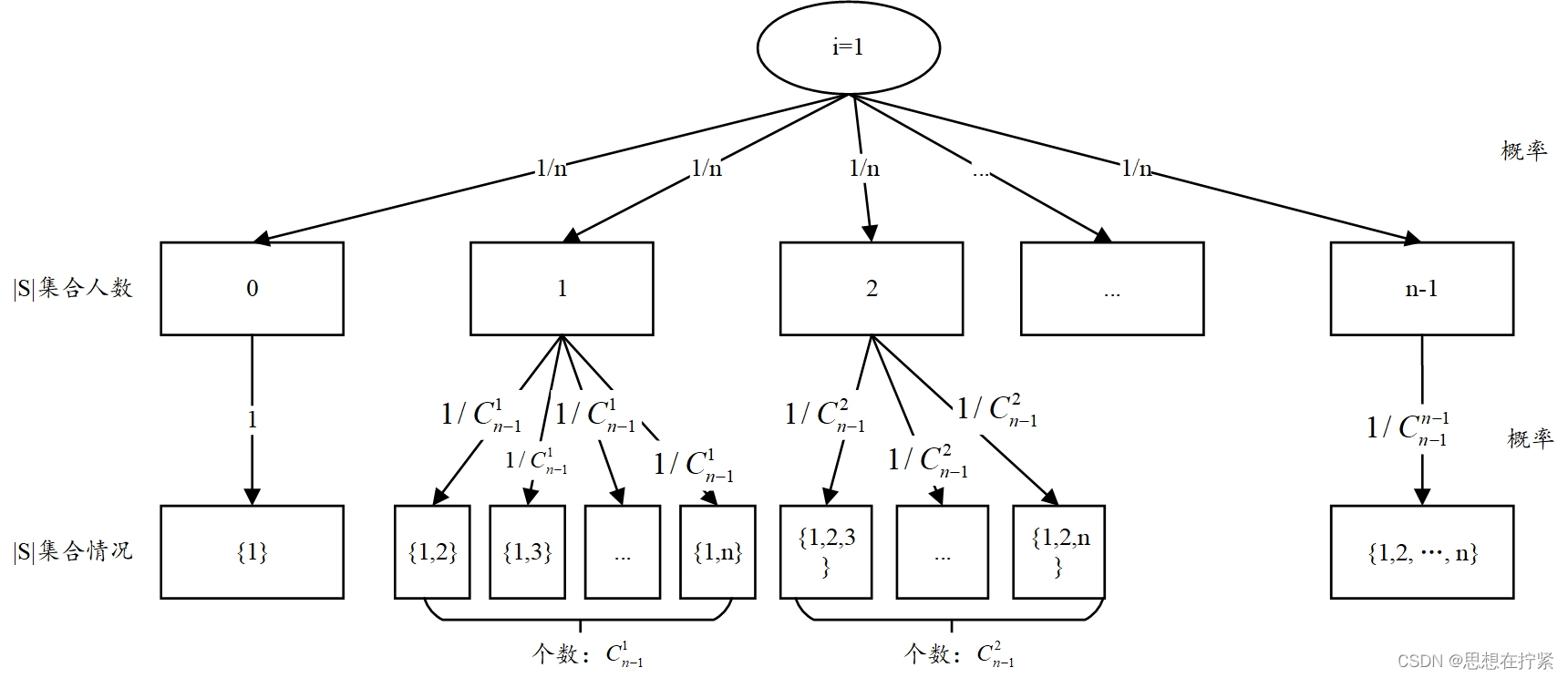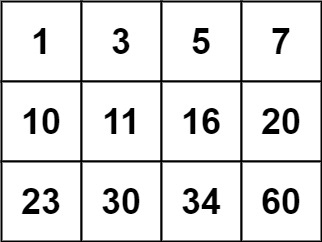1. 简介
C语言是一种通用的编程语言,广泛应用于系统编程、嵌入式系统和高性能应用程序。它由Dennis Ritchie在1972年开发,并且至今仍然非常流行。C语言以其高效、灵活和强大的功能著称,是许多现代编程语言的基础。
2. 基本语法
2.1 Hello, World!程序
#include <stdio.h>int main() {printf("Hello, World!\n");return 0;
}
#include <stdio.h>:包含标准输入输出库。int main():程序的主函数。printf:输出函数,用于打印字符串。return 0:返回0表示程序成功结束。
2.2 注释
C语言支持单行注释和多行注释:
// 这是单行注释
/*这是多行注释
*/
3. 数据类型和变量
3.1 基本数据类型
C语言有以下几种基本数据类型:
- 整型(int)
- 浮点型(float, double)
- 字符型(char)
int a = 10;
float b = 5.5;
char c = 'A';
3.2 变量声明和初始化
变量声明和初始化可以在同一行完成:
int x = 5;
float y = 3.14;
char z = 'A';
3.3 常量
使用const关键字定义常量:
const int MAX = 100;
| 数据类型 | 描述 |
|---|---|
| int | 整型 |
| float | 浮点型 |
| double | 双精度浮点型 |
| char | 字符型 |
| const | 常量 |
4. 运算符
4.1 算术运算符
C语言支持以下算术运算符:
+:加法-:减法*:乘法/:除法%:取模
int a = 10, b = 3;
int sum = a + b; // sum = 13
int diff = a - b; // diff = 7
int prod = a * b; // prod = 30
int quot = a / b; // quot = 3
int mod = a % b; // mod = 1
4.2 关系运算符
关系运算符用于比较两个值:
==:等于!=:不等于>:大于<:小于>=:大于等于<=:小于等于
int x = 5, y = 10;
int result = (x == y); // result = 0 (false)
result = (x != y); // result = 1 (true)
result = (x > y); // result = 0 (false)
result = (x < y); // result = 1 (true)
4.3 逻辑运算符
逻辑运算符用于组合多个条件:
&&:逻辑与||:逻辑或!:逻辑非
int a = 1, b = 0;
int result = (a && b); // result = 0 (false)
result = (a || b); // result = 1 (true)
result = !a; // result = 0 (false)
4.4 赋值运算符
赋值运算符用于给变量赋值:
=:赋值+=:加后赋值-=:减后赋值*=:乘后赋值/=:除后赋值%=:模后赋值
int a = 10;
a += 5; // a = 15
a -= 3; // a = 12
a *= 2; // a = 24
a /= 4; // a = 6
a %= 4; // a = 2
4.5 位运算符
位运算符用于操作二进制位:
&:按位与|:按位或^:按位异或~:按位取反<<:左移>>:右移
int a = 5, b = 3; // a = 0101, b = 0011
int result = a & b; // result = 0001 (1)
result = a | b; // result = 0111 (7)
result = a ^ b; // result = 0110 (6)
result = ~a; // result = 11111111111111111111111111111010 (-6)
result = a << 1; // result = 1010 (10)
result = a >> 1; // result = 0010 (2)
4.6 其他运算符
? ::三元运算符
int a = 10, b = 20;
int max = (a > b) ? a : b; // max = 20
| 运算符 | 描述 |
|---|---|
| +, -, *, /, % | 算术运算符 |
| ==, !=, >, <, >=, <= | 关系运算符 |
| &&, | |
| =, +=, -=, *=, /=, %= | 赋值运算符 |
| &, | , ^, ~, <<, >> |
| ? : | 三元运算符 |
4.7 综合示例
#include <stdio.h>int main() {int a = 10, b = 20;int sum = a + b;int diff = a - b;int prod = a * b;int quot = a / b;int mod = a % b;if (a > b) {printf("a is greater than b\n");} else {printf("a is not greater than b\n");}int max = (a > b) ? a : b;printf("The maximum value is: %d\n", max);return 0;
}
5. 控制结构
5.1 条件语句
5.1.1 if语句
int x = 5;
if (x > 0) {printf("x is positive\n");
}
5.1.2 if-else语句
int x = -5;
if (x > 0) {printf("x is positive\n");
} else {printf("x is non-positive\n");
}
5.1.3 switch语句
int day = 3;
switch (day) {case 1:printf("Monday\n");break;case 2:printf("Tuesday\n");break;case 3:printf("Wednesday\n");break;default:printf("Invalid day\n");
}5.2 循环语句
循环语句允许重复执行某段代码,直到满足特定条件。C语言支持三种主要的循环语句:for循环、while循环和do-while循环。
5.2.1 for循环
for循环通常用于需要明确知道循环次数的场景。
for (int i = 0; i < 5; i++) {printf("i = %d\n", i);
}
- 初始化:
int i = 0,在循环开始前执行。 - 条件:
i < 5,在每次循环前检查,如果条件为真,则执行循环体。 - 迭代:
i++,在每次循环结束后执行。
5.2.2 while循环
while循环在每次迭代前检查条件,如果条件为真,则执行循环体。
int i = 0;
while (i < 5) {printf("i = %d\n", i);i++;
}
5.2.3 do-while循环
do-while循环先执行循环体,然后再检查条件。如果条件为真,则继续循环。
int i = 0;
do {printf("i = %d\n", i);i++;
} while (i < 5);
| 循环类型 | 描述 |
|---|---|
for | 适用于已知循环次数的情况 |
while | 适用于循环次数不确定,但需要在每次迭代前检查条件的情况 |
do-while | 适用于至少需要执行一次循环体的情况 |
5.3 跳转语句
跳转语句用于改变程序的执行流程。C语言支持以下跳转语句:break、continue和goto。
5.3.1 break
break语句用于立即退出循环或switch语句。
for (int i = 0; i < 10; i++) {if (i == 5) {break;}printf("i = %d\n", i);
}
5.3.2 continue
continue语句用于跳过当前迭代,继续下一次循环。
for (int i = 0; i < 10; i++) {if (i == 5) {continue;}printf("i = %d\n", i);
}
5.3.3 goto
goto语句用于无条件跳转到程序中的指定标签。应谨慎使用goto,因为它可能导致代码难以理解和维护。
int i = 0;
start:
printf("i = %d\n", i);
i++;
if (i < 5) {goto start;
}
| 跳转语句 | 描述 |
|---|---|
break | 立即退出循环或switch语句 |
continue | 跳过当前迭代,继续下一次循环 |
goto | 无条件跳转到指定标签 |
5.4 综合示例
#include <stdio.h>int main() {// for 循环示例for (int i = 0; i < 5; i++) {printf("for loop: i = %d\n", i);}// while 循环示例int j = 0;while (j < 5) {printf("while loop: j = %d\n", j);j++;}// do-while 循环示例int k = 0;do {printf("do-while loop: k = %d\n", k);k++;} while (k < 5);// break 和 continue 示例for (int l = 0; l < 10; l++) {if (l == 5) {break; // 退出循环}if (l % 2 == 0) {continue; // 跳过当前迭代}printf("break and continue: l = %d\n", l);}return 0;
}
6. 函数
函数是组织代码的一种方式,能够提高代码的重用性和可读性。C语言中的函数包括函数定义和函数声明。
6.1 函数的定义和声明
函数定义包括函数的返回类型、函数名、参数列表和函数体。函数声明则是在函数使用前声明其类型和参数。
// 函数声明
int add(int x, int y);// 函数定义
int add(int x, int y) {return x + y;
}int main() {int result = add(3, 4);printf("Result: %d\n", result);return 0;
}
6.2 函数参数和返回值
函数可以接受参数并返回值。参数在函数定义时指定,调用时传递。
int multiply(int a, int b) {return a * b;
}int main() {int result = multiply(5, 6);printf("Result: %d\n", result);return 0;
}
6.3 递归函数
递归函数是指一个函数在其定义中调用自身。递归需要一个终止条件,否则会导致无限递归。
int factorial(int n) {if (n == 0) {return 1;}return n * factorial(n - 1);
}int main() {int result = factorial(5);printf("Factorial: %d\n", result);return 0;
}
6.4 函数指针
函数指针是指向函数的指针,可以用来调用函数。
#include <stdio.h>int add(int a, int b) {return a + b;
}int main() {int (*func_ptr)(int, int) = add;int result = func_ptr(3, 4);printf("Result: %d\n", result);return 0;
}
| 函数类型 | 描述 |
|---|---|
| 普通函数 | 定义和声明函数,接受参数并返回值 |
| 递归函数 | 在函数定义中调用自身 |
| 函数指针 | 指向函数的指针,用于调用函数 |
6.5 综合示例
#include <stdio.h>// 函数声明
int add(int x, int y);
int multiply(int a, int b);
int factorial(int n);// 函数定义
int add(int x, int y) {return x + y;
}int multiply(int a, int b) {return a * b;
}int factorial(int n) {if (n == 0) {return 1;}return n * factorial(n - 1);
}int main() {int sum = add(3, 4);int product = multiply(5, 6);int fact = factorial(5);printf("Sum: %d\n", sum);printf("Product: %d\n", product);printf("Factorial: %d\n", fact);// 函数指针int (*func_ptr)(int, int) = add;int result = func_ptr(7, 8);printf("Function pointer result: %d\n", result);return 0;
}7. 数组
数组是存储相同类型数据的集合。C语言支持一维数组和多维数组。
7.1 一维数组
一维数组是最简单的数组形式,用于存储一组相同类型的数据。
int arr[5] = {1, 2, 3, 4, 5};
for (int i = 0; i < 5; i++) {printf("arr[%d] = %d\n", i, arr[i]);
}
7.2 多维数组
多维数组是数组的数组,可以用于存储更复杂的数据结构。
int matrix[2][3] = {{1, 2, 3},{4, 5, 6}
};for (int i = 0; i < 2; i++) {for (int j = 0; j < 3; j++) {printf("matrix[%d][%d] = %d\n", i, j, matrix[i][j]);}
}
7.3 字符串(字符数组)
字符串在C语言中表示为字符数组,以空字符\0结尾。
char str[] = "Hello, World!";
printf("%s\n", str);
7.4 数组与指针的关系
数组名实际上是一个指向数组首元素的指针。
int arr[5] = {1, 2, 3, 4, 5};
int *p = arr; // 数组名即为数组首元素的地址
for (int i = 0; i < 5; i++) {printf("arr[%d] = %d, *(p + %d) = %d\n", i, arr[i], i, *(p + i));
}
| 数组类型 | 描述 |
|---|---|
| 一维数组 | 存储一组相同类型的数据 |
| 多维数组 | 数组的数组,用于存储更复杂的数据结构 |
| 字符串 | 字符数组,以空字符\0结尾 |
| 数组与指针 | 数组名是指向数组首元素的指针 |
7.5 综合示例
#include <stdio.h>int main() {// 一维数组示例int arr[5] = {1, 2, 3, 4, 5};for (int i = 0; i < 5; i++) {printf("arr[%d] = %d\n", i, arr[i]);}// 多维数组示例int matrix[2][3] = {{1, 2, 3},{4, 5, 6}};for (int i = 0; i < 2; i++) {for (int j = 0; j < 3; j++) {printf("matrix[%d][%d] = %d\n", i, j, matrix[i][j]);}}// 字符串示例char str[] = "Hello, World!";printf("%s\n", str);// 数组与指针的关系示例int *p = arr; // 数组名即为数组首元素的地址for (int i = 0; i < 5; i++) {printf("arr[%d] = %d, *(p + %d) = %d\n", i, arr[i], i, *(p + i));}return 0;
}
8. 指针
指针是C语言中非常重要的概念,用于存储变量的地址。指针的灵活性和强大功能使其在C语言编程中广泛应用。
8.1 指针的基本概念
指针是一个变量,其值为另一个变量的地址。
int a = 10;
int *p = &a; // p是一个指针,存储了变量a的地址
printf("a = %d, *p = %d\n", a, *p); // *p表示指针p指向的变量的值
8.2 指针的声明和初始化
指针的声明和初始化如下:
int a = 10;
int *p = &a; // 声明一个指向int类型的指针,并初始化为变量a的地址
8.3 指针运算
指针可以进行加减运算和比较运算。
- 指针加减运算
int arr[5] = {1, 2, 3, 4, 5};
int *p = arr;
p = p + 2; // 指针指向第三个元素
printf("*p = %d\n", *p); // 输出3
- 指针比较运算
int *p1 = arr;
int *p2 = arr + 2;
if (p1 < p2) {printf("p1 points to an earlier element than p2\n");
}
8.4 指针与数组
指针和数组有着密切的关系,数组名实际上是一个指向数组首元素的指针。
int arr[5] = {1, 2, 3, 4, 5};
int *p = arr; // 数组名即为数组首元素的地址
for (int i = 0; i < 5; i++) {printf("arr[%d] = %d, *(p + %d) = %d\n", i, arr[i], i, *(p + i));
}
8.5 函数中的指针参数
指针可以作为函数参数传递,允许函数修改调用者的变量。
void swap(int *a, int *b) {int temp = *a;*a = *b;*b = temp;
}int main() {int x = 10, y = 20;swap(&x, &y);printf("x = %d, y = %d\n", x, y); // 输出x = 20, y = 10return 0;
}
8.6 指向指针的指针
指针不仅可以指向普通变量,还可以指向其他指针。
int a = 10;
int *p = &a;
int **pp = &p; // pp是一个指向指针p的指针
printf("a = %d, *p = %d, **pp = %d\n", a, *p, **pp);
8.7 动态内存分配
C语言提供了一组函数用于动态分配和释放内存。
malloc:分配指定字节数的内存calloc:分配指定数量的内存块,并初始化为零realloc:重新分配内存free:释放内存
#include <stdio.h>
#include <stdlib.h>int main() {// 使用malloc分配内存int *arr = (int *)malloc(5 * sizeof(int));if (arr == NULL) {printf("Memory allocation failed\n");return 1;}for (int i = 0; i < 5; i++) {arr[i] = i + 1;}for (int i = 0; i < 5; i++) {printf("arr[%d] = %d\n", i, arr[i]);}// 释放内存free(arr);return 0;
}
| 指针类型 | 描述 |
|---|---|
| 普通指针 | 存储变量的地址 |
| 指向指针的指针 | 存储指针的地址 |
| 动态内存分配 | 使用malloc, calloc, realloc, free进行内 |
8.8 综合示例
#include <stdio.h>
#include <stdlib.h>// 函数声明
void swap(int *a, int *b);int main() {// 指针基本操作int a = 10;int *p = &a;printf("a = %d, *p = %d\n", a, *p);// 指针运算int arr[5] = {1, 2, 3, 4, 5};p = arr;for (int i = 0; i < 5; i++) {printf("arr[%d] = %d, *(p + %d) = %d\n", i, arr[i], i, *(p + i));}// 函数中的指针参数int x = 10, y = 20;swap(&x, &y);printf("x = %d, y = %d\n", x, y);// 指向指针的指针int **pp = &p;printf("a = %d, *p = %d, **pp = %d\n", a, *p, **pp);// 动态内存分配int *dynamicArr = (int *)malloc(5 * sizeof(int));if (dynamicArr == NULL) {printf("Memory allocation failed\n");return 1;}for (int i = 0; i < 5; i++) {dynamicArr[i] = i + 1;}for (int i = 0; i < 5; i++) {printf("dynamicArr[%d] = %d\n", i, dynamicArr[i]);}free(dynamicArr);return 0;
}void swap(int *a, int *b) {int temp = *a;*a = *b;*b = temp;
}
结论
本文详细介绍了C语言的基础知识,从基本语法、变量、控制结构、函数、数组一直到指针。通过代码示例和表格总结,帮助你更好地理解各个知识点。希望这些内容能够为你打下坚实的基础,进一步深入学习C语言。
综合示例
#include <stdio.h>
#include <stdlib.h>// 函数声明
// add 函数用于返回两个整数的和
int add(int x, int y);// swap 函数用于交换两个整数的值
void swap(int *a, int *b);// factorial 函数用于计算一个整数的阶乘
int factorial(int n);// printArray 函数用于打印数组的内容
void printArray(int *arr, int size);// initializeMatrix 函数用于初始化一个2x3的矩阵
void initializeMatrix(int matrix[2][3]);int main() {// 基本数据类型和变量int a = 10; // 整型变量float b = 5.5; // 浮点型变量char c = 'A'; // 字符型变量const int MAX = 100; // 常量,值不可改变// 算术运算符和关系运算符的使用int sum = add(a, 5); // 调用 add 函数计算 a 和 5 的和if (sum > MAX) { // 使用关系运算符比较 sum 和 MAXprintf("Sum is greater than MAX\n");} else {printf("Sum is less than or equal to MAX\n");}// 逻辑运算符if (a > 0 && b > 0) { // 使用逻辑运算符检查 a 和 b 是否都为正数printf("a and b are positive\n");}// 控制结构// 条件语句if (a > 0) { // if 语句检查条件是否为真printf("a is positive\n");} else if (a == 0) { // else if 语句检查另一个条件printf("a is zero\n");} else { // else 语句处理所有其他情况printf("a is negative\n");}// switch 语句switch (c) { // 根据变量 c 的值执行相应的 case 语句case 'A':printf("Character is A\n");break; // break 语句用于退出 switch 语句case 'B':printf("Character is B\n");break;default: // default 语句处理所有未匹配的情况printf("Character is not A or B\n");}// 循环语句// for 循环for (int i = 0; i < 5; i++) { // for 循环用于重复执行代码块,直到条件为假printf("for loop: i = %d\n", i);}// while 循环int j = 0;while (j < 5) { // while 循环在每次迭代前检查条件printf("while loop: j = %d\n", j);j++;}// do-while 循环int k = 0;do { // do-while 循环先执行代码块,然后检查条件printf("do-while loop: k = %d\n", k);k++;} while (k < 5);// 跳转语句for (int l = 0; l < 10; l++) {if (l == 5) {break; // 退出循环}if (l % 2 == 0) {continue; // 跳过当前迭代}printf("break and continue: l = %d\n", l);}// 数组和指针int arr[5] = {1, 2, 3, 4, 5}; // 定义一个包含5个整数的一维数组printArray(arr, 5); // 调用 printArray 函数打印数组内容// 函数中的指针参数int x = 10, y = 20;swap(&x, &y); // 调用 swap 函数交换 x 和 y 的值printf("After swap: x = %d, y = %d\n", x, y);// 递归函数int fact = factorial(5); // 调用 factorial 函数计算 5 的阶乘printf("Factorial of 5: %d\n", fact);// 多维数组int matrix[2][3]; // 定义一个2x3的二维数组initializeMatrix(matrix); // 调用 initializeMatrix 函数初始化矩阵for (int i = 0; i < 2; i++) {for (int j = 0; j < 3; j++) {printf("matrix[%d][%d] = %d\n", i, j, matrix[i][j]);}}// 字符串char str[] = "Hello, World!"; // 定义一个字符串(字符数组)printf("%s\n", str);// 动态内存分配int *dynamicArr = (int *)malloc(5 * sizeof(int)); // 使用 malloc 分配内存if (dynamicArr == NULL) { // 检查内存分配是否成功printf("Memory allocation failed\n");return 1;}for (int i = 0; i < 5; i++) {dynamicArr[i] = i + 1; // 初始化动态数组}printArray(dynamicArr, 5); // 打印动态数组内容free(dynamicArr); // 释放动态分配的内存return 0;
}// 函数定义
int add(int x, int y) {// 返回两个整数的和return x + y;
}void swap(int *a, int *b) {// 交换两个整数的值int temp = *a;*a = *b;*b = temp;
}int factorial(int n) {// 递归计算整数 n 的阶乘if (n == 0) {return 1;}return n * factorial(n - 1);
}void printArray(int *arr, int size) {// 打印数组的内容for (int i = 0; i < size; i++) {printf("arr[%d] = %d\n", i, arr[i]);}
}void initializeMatrix(int matrix[2][3]) {// 初始化一个2x3的矩阵for (int i = 0; i < 2; i++) {for (int j = 0; j < 3; j++) {matrix[i][j] = i * 3 + j + 1; // 按顺序赋值}}
}

